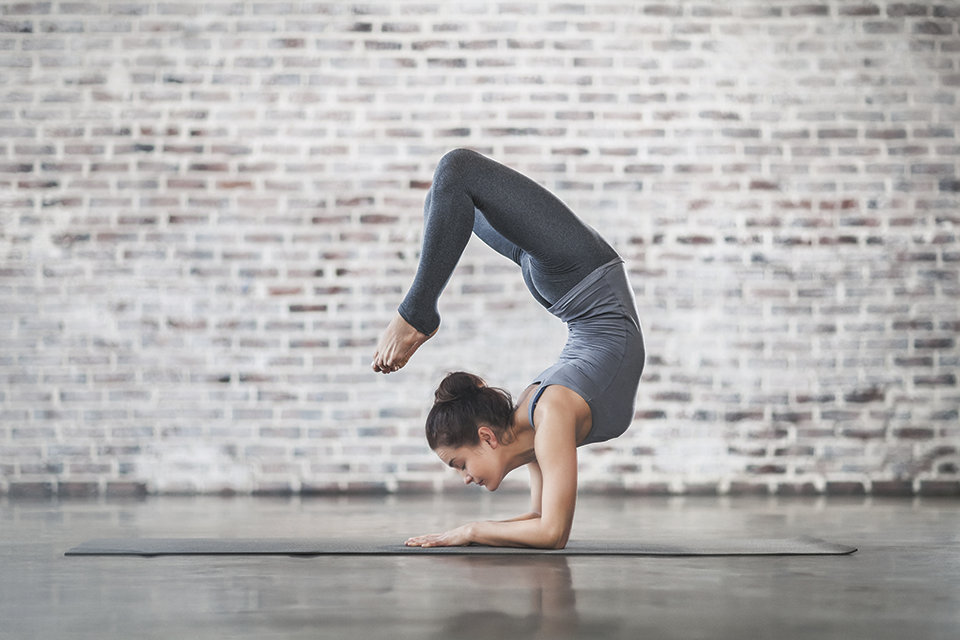Finding Your Way Om: The Ideal Yoga for You

Let’s be real: not all yoga is created equal. There are so many styles of yoga, each is a vastly different experience, and yet all are under this same broad title of “yoga.” It’s like mint chocolate chip and rocky road—both are delicious ice cream flavors, but are wildly different on the palate. It’s not to say one yoga flavor is better than another, but each style can serve various purposes or appeal to different people. Here are answers to some common questions that may help guide you onto the mat and into a class that best suits your personal yoga tastes and needs.
(Also, use this flow chart to help find your ideal yoga style!)
I’m an athlete; running, cycling, weight lifting and other sports are my main jam. I’ve heard yoga will help prevent injury and enhance my performance, but which type should I do?
Many professional athletes have found regular yoga practice to be beneficial to their overall physical performance (just ask Shaq). Additionally, yoga cultivates a mindfulness practice that helps you deal with moments of intense pressure at gametime. Sports that require quick, powerful movements tend to build strong muscles and ligaments—but, over time, these muscles get compressed, making them more susceptible to injury. Yoga simultaneously strengthens and lengthens muscles, helping them become more elastic and injury-proof. Longer holds in flexibility poses, bodyweight strengthening, and mind-body connection facilitated by the breath is a winning combination for any athlete.
As a competitor you might crave high-intensity workouts, but you’d benefit more from some slower-paced, “stretchy” yoga classes like Hatha or Yin, to balance the fiery-paced work your body does in sports. Likewise, a good flowing Vinyasa can be great for meditative movement and deeper awareness of the breath-body connection that will help keep you more zen and focused in your game.
I’m rehabilitating an injury and want to increase flexibility, strength, and movement in that area. What kind of yoga will help?
Yoga is wonderful for healing, but how you approach it depends on the type of injury, your overall fitness, and how far along in the healing process you are. It’s always best to start conservatively and build from there, and definitely consult your physician prior to adding new activities, yoga included. Ideally, private yoga instruction with a yoga therapist specifically trained in anatomy and working with injuries is a great place to start. However, if attending a public class, look for Hatha, Yin and Restorative classes that move slowly and offer plenty of support with props. Some Alignment classes may also be appropriate, depending on the level and focus of the class. In any class, talk to the instructor before class about your injury so s/he can help keep you safe with modifications. Ultimately, you have to be the one to protect yourself, and if there is a pose or movement that feels painful, stop immediately and ask for help. In a public class, you never know what is going to be taught, so when in doubt, play it safe—reinjury only means the road to recovery will take longer.
I want to lose weight and get fit! Which yoga torches and tones?
Heck, yeah! Yoga is a great way to get in shape through both the physical practice of asana (poses), and the mindfulness it teaches that extends beyond the mat to choices around how to nourish and care for your body. Many people think yoga is just easy stretching and chanting, not a “real” workout—to which I say: Get your butt to a Power, Bikram, fast-paced Vinyasa, or Ashtanga class and you shall be humbled. Many of these styles are in a heated studio, so the sweat will drip in no time (bring a towel!). Often these classes are geared toward advanced yogis, so check with the studio to see what is appropriate for your experience level. Even if you’re a fit athlete already, it’s good to have some beginner’s instruction so you know what’s going on and how to stay safe in more advanced classes. Many studios offer various levels, so start with level one at least for a few classes. Plus, many will attest—it’s harder than it looks. Ease into it, and you’ll burn calories, build muscle, and do your body good in any class.
I need to chill. De-stress. Unwind. My mind won’t stop buzzing, I have trouble sleeping and I can’t seem to slow down. Help!
Amen. Who couldn’t use a little relaxation in this fast-paced world? Yoga classes that are geared toward managing stress and finding serenity are the perfect way to press pause and simply be in the moment. Seek out more soothing styles like Yin, Restorative, Meditation, Kundalini and Yoga Nidra. Slowing your roll is easier said than done, so don’t be surprised if some of the practices are frustrating at first. It’s uncomfortable because it forces you to confront things often sidelined by busy-ness. But the effects of yoga are truly profound. You don’t have to ascribe to any certain spirituality or belief to discover ways to explore your own inner self more deeply and to find your truth through that journey.






